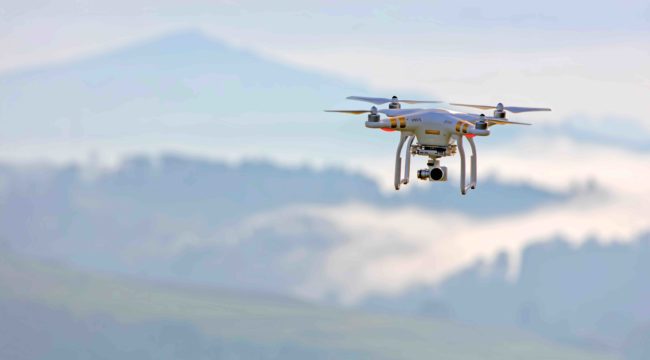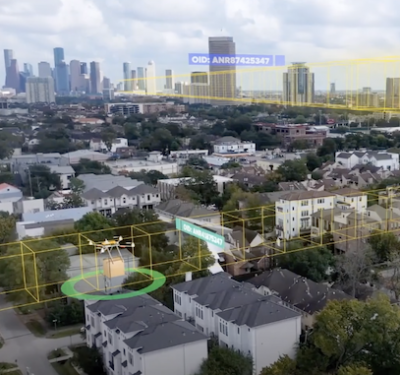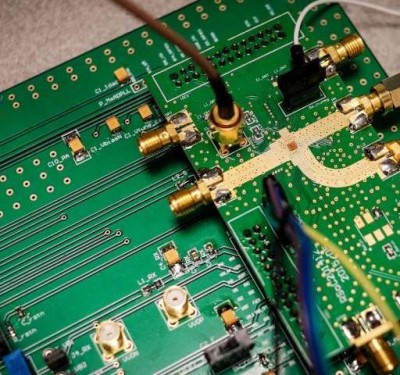
Photo Courtesy of Richard Gomez Angel via unsplash.
Leading drone manufacturer DJI pledged to boost safety by adding to its drones receivers for manned aircraft location signals. The new capability will be added to DJI models released after January 1, 2020 that weigh more than 250 grams.
DJI will be enabling drones to receive signals from the Automatic Dependent Surveillance—Broadcast (ADS–B) equipment carried by the vast majority of manned aircraft. ADS-B uses GPS to calculate the position of an aircraft in flight and broadcast it to other aircraft and to ground control to help avoid collisions. The Federal Aviation Administration is already requiring the vast majority of manned aircraft to equip with ABS-B out capability, that is the ability to broadcast a signal, by January 1, 2020.
DJI will be installing AirSense technology, which receives ADS-B signals from nearby airplanes and helicopters and warns drone pilots if they appear to be on a collision course. AirSense has previously been available only on some professional-grade DJI drones.
“DJI was the first company to offer geofencing, automatic altitude limits, return-to-home technology and other safety features to the world’s growing community of personal and professional drone pilots,” said Brendan Schulman, DJI vice president for policy and legal affairs. “We believe our efforts have helped drones attain their enviable safety record, and we expect our new agenda will further improve safety even as more drones take to the skies.”
“The aerial application industry has over 3,500 agricultural pilots that help farmers grow over 28 percent of our nation’s commercial cropland. They are flying 10 feet off the ground at speeds of over 100 miles per hour. As such, they must have great focus and precision with the important job they are performing,” said Andrew Moore, executive director at the National Agricultural Aviation Association, in a statement. “Studies show that small drones are nearly impossible for our pilots to see, let alone track. An ideal drone system for manned ag pilots is one that has an ADS-B tracking system that can sense and avoid agricultural and other manned aircraft. DJI has taken the first step towards this by now equipping all of their drones with ADS-B tracking so their drone operators will be aware of other aircraft equipped with ADS-B tracking technology. They deserve real credit for this safety initiative.”
The AirSense commitment is the first of 10 points in the company’s new “Elevating Safety,” plan for how DJI, other drone manufacturers, and government officials can help maintain air safety. The 10 points are:
1) DJI will install ADS-B receivers in all new drones above 250 grams
2) DJI will develop a new automatic warning for drone pilots flying at extended distances
3) DJI will establish an internal Safety Standards Group to meet regulatory and customer expectations
4) Aviation industry groups must develop standards for reporting drone incidents
5) All drone manufacturers should install geofencing and remote identification
6) Governments must require remote identification
7) Governments must require a user-friendly knowledge test for new drone pilots
8) Governments must clearly designate sensitive restriction areas
9) Local authorities must be allowed to respond to drone threats that are clear and serious
10) Governments must increase enforcement of laws against unsafe drone operation
“Expanding the availability of AirSense to DJI pilots is a meaningful step forward in safely integrating UAS and reducing conflicts with manned aircraft,” said Rune Duke, senior director of airspace and air traffic at the Aircraft Owners and Pilots Association. “ADS-B In is used daily by thousands of pilots to increase their situational awareness and ensure safe operations. As the general aviation fleet further equips with ADS-B Out and other NextGen technology, enhancements like AirSense will allow all pilots to maximize their investment. All of aviation will benefit from the incorporation of this technology into DJI’s large fleet.”






